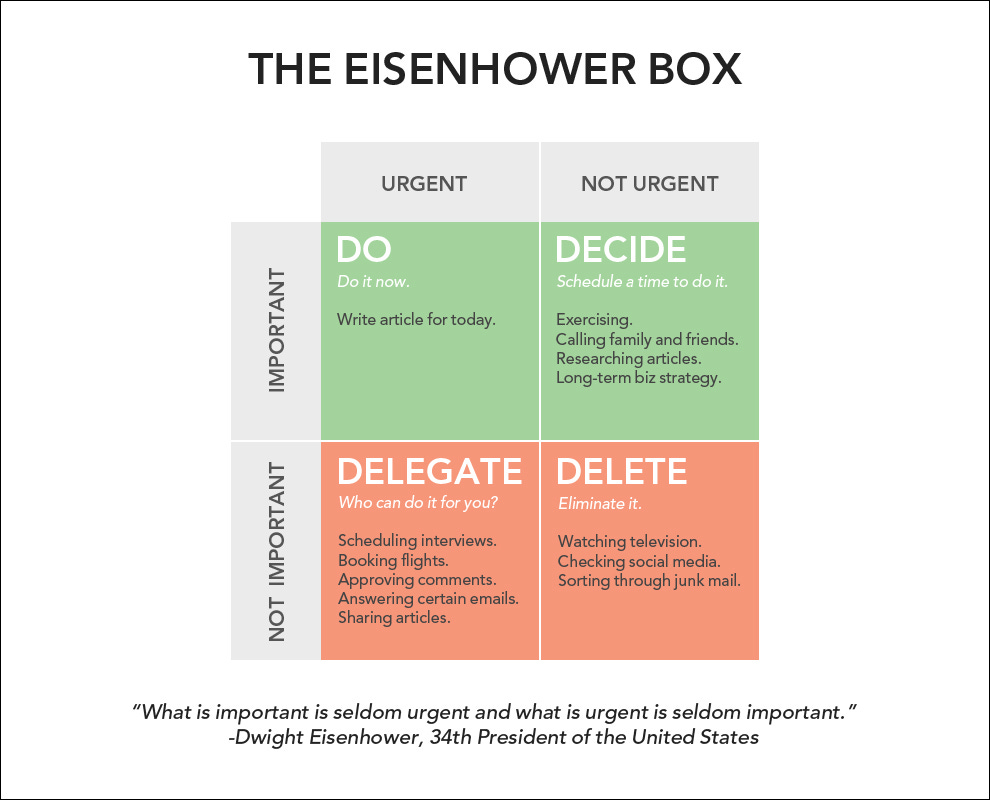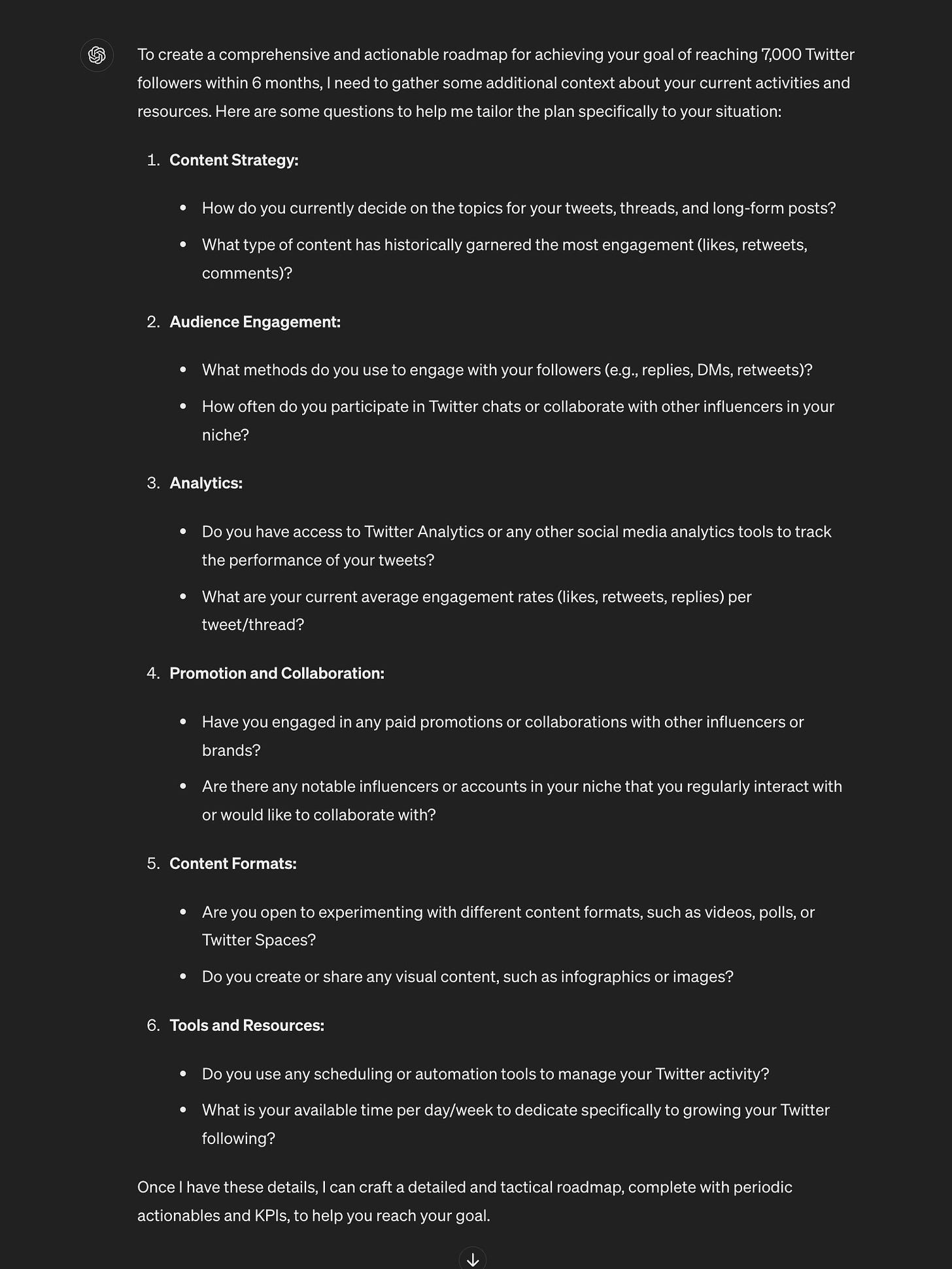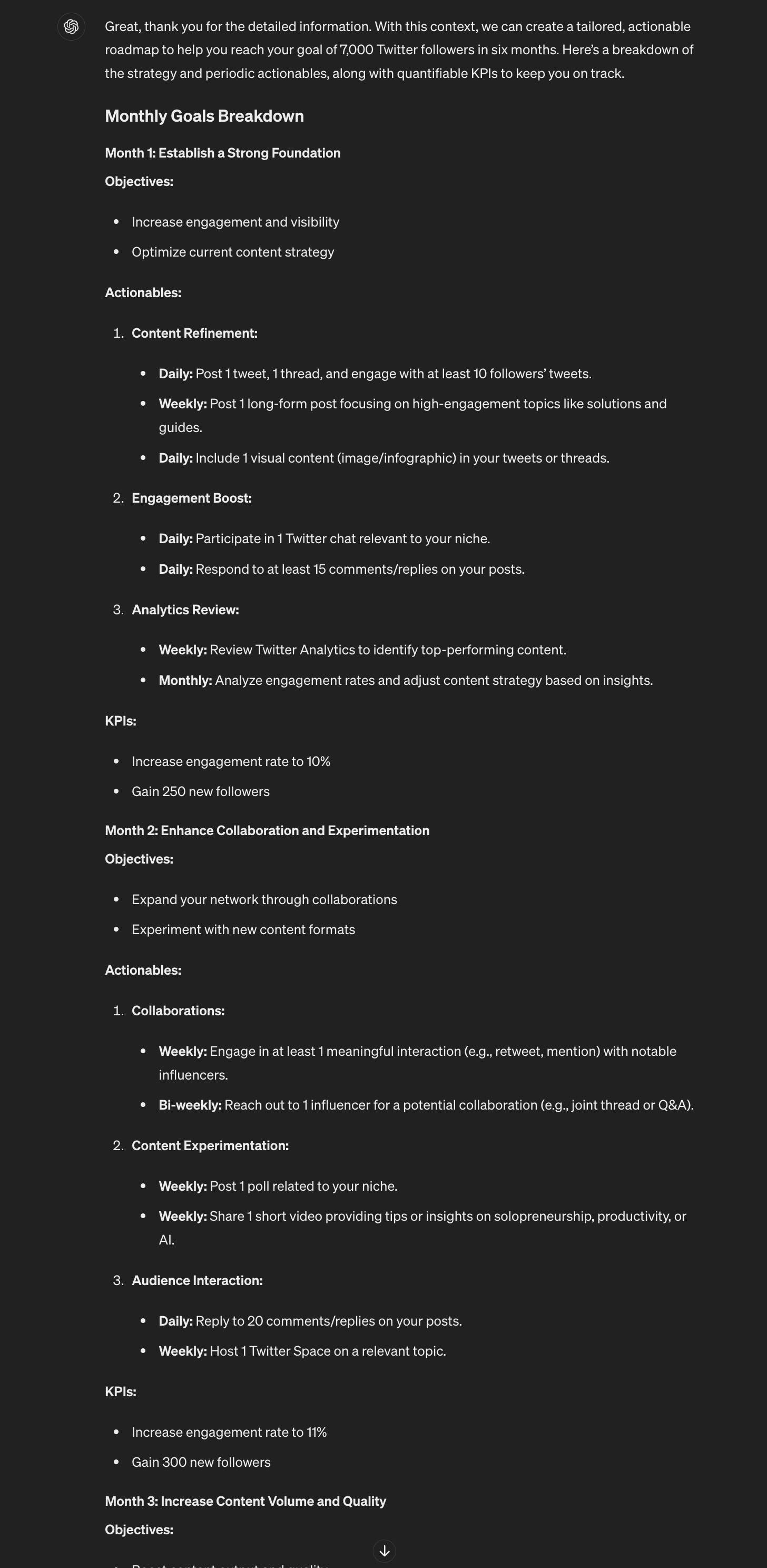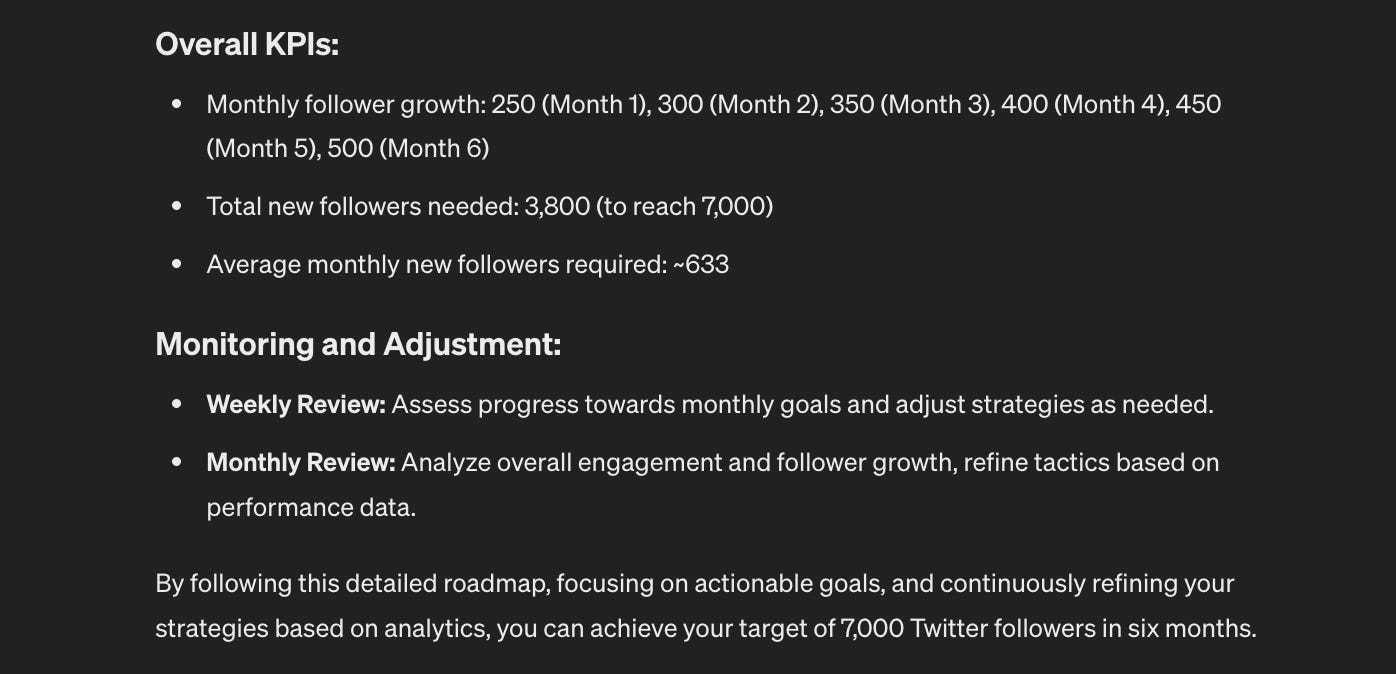Solopreneur Success: The Ultimate Guide to Goal Setting and Action Planning
Includes an extremely useful AI Prompt that you can use instantly to generate a business action plan.
Goal Setting and Action Planning
My business partner frequently talks about goal setting. She often asks, "What are your goals?" and states, “My goal is to…”.
In the past, I concentrated solely on action. I thought that too much focus on goals wouldn't produce concrete results. The actual tasks involved in achieving them—how, when, and what to do—appeared to be neglected.
Both viewpoints are significant. Goal setting and action planning are crucial, but they should be integrated for the best outcomes.
Before we explore further, let's understand more about goals.

Why Long-Term Goals May Not Work
Setting yearly goals can seem like a great idea at first, but sometimes they don't pan out like we hoped. This is often because they just don't align with how our brains naturally work. Let's break it down:
Our brains can struggle with understanding long-term timelines.
Keeping up motivation for 3-5 years can be a real challenge.
In the fast-moving world of being a solopreneur, one big event can change everything, making your yearly goals seem less relevant.
So why not think about it this way? Start by understanding the distinction between setting goals and having a vision. A vision is your big-picture idea of where you want to be in 1, 5, or even 10 years. It's powerful. But when it comes to setting specific goals or milestones for success, maybe consider a shorter time frame.
So, what's the ideal timeframe?
The longest period I recommend for setting goals is two to three months. This duration is enough to set ambitious goals while still maintaining motivation. However, that's just my perspective. You should experiment with your own goals, possibly keep a journal to self-reflect, and ultimately determine the best duration for your goals.
Three Effective Principles for Setting Ambitious Goals
Principle 1: Set Action-Oriented Goals
Concentrate on goals based on actions that are directly within your control, rather than outcomes that aren't. This tactic gives you more command over your progress, enhancing your chances of success.
For instance, rather than setting a goal to "earn $10,000 next month" (an outcome outside of your direct control), aim for "meeting at least one potential corporate client with over 50 employees per day and selling them a high-value course priced at $500".
Principle 2: Focus on One Goal at a Time
While it's tempting to overhaul all aspects of your life simultaneously, avoid this pitfall. Juggling multiple goals can scatter your focus, reducing the likelihood of accomplishing any of them. Determine your top priority, accept the compromise, and set a singular goal. Maintain other life areas in "maintenance mode" as you concentrate on this lone objective.
For example, if you're a solopreneur and your main objective is to grow your business, your singular goal could be "acquiring 20 new clients in the next two months". While you might also be tempted to set additional goals such as "launch a new product line" or "start a blog for the business", it's important to keep your focus on one major goal at a time. The other aspirations can be put in maintenance mode, meaning you'll still dedicate some time to them, but they won't divert substantial resources or focus away from your primary objective.
Principle 3: Set Challenging Goals
Striking the right balance of difficulty is crucial. Goals that are too simple won't motivate you, yet ones that are excessively tough may lead to feelings of defeat before you've even begun. Strive for goals that pose a challenge but remain attainable.
For instance, if you're a writer, a challenging yet achievable goal could be "write a 50,000-word novel in the next three months". This goal is certainly not easy, it requires consistent effort and dedication. However, it is also not so daunting that it feels impossible. It provides a clear target to work towards and can be broken down into smaller, daily word count targets to make it more manageable.
Developing Action Plans from Specific Goals
Once you have a specific goal in mind, the next step is to develop a detailed action plan to achieve it.
Here's a step-by-step guide on how to do it.
Break Down the Goal:
Start by breaking down your goal into smaller, more manageable tasks. This will make your goal seem less daunting and will provide a clear roadmap to success.
Identify Key Tasks:
The next step involves identifying the key tasks that need to be accomplished in order to meet each smaller goal.
These tasks should be as specific as possible, allowing you to measure their completion accurately and providing a clear path towards achieving your goals.
It's important to ensure that these tasks are realistic, taking into consideration the resources available to you. This can include time, manpower, and financial resources.
By identifying these tasks, you can create a comprehensive plan that will guide you towards achieving your goals.
Prioritise Tasks:
Not all tasks are created equal. Determine which tasks are most important or urgent and prioritise them accordingly.
The Eisenhower Matrix, also known as the Urgent-Important Matrix, is a highly effective method for prioritising tasks. This tool helps you decide on and manage the urgency and importance of your tasks and can be an invaluable asset in your action planning.
The matrix consists of four quadrants:
Quadrant 1 - DO (Urgent and Important): These are tasks that need to be dealt with immediately. They are both urgent and important. These are often crises or problems that arise and need immediate attention.
Quadrant 2 - DECIDE (Not Urgent but Important): These tasks are important but do not require immediate action. These are often long-term development projects or tasks that contribute to your long-term goals.
Quadrant 3 - DELEGATE (Urgent but Not Important): These tasks are often interruptions or distractions that need to be dealt with immediately but do not contribute significantly to your goals.
Quadrant 4 - DELETE (Not Urgent and Not Important): These tasks are neither urgent nor important. They are often activities that can be considered time-wasters.
The objective when using the Eisenhower Matrix is to try and spend the majority of your time on Quadrant 2 tasks. These are the activities that align most closely with your goals and will contribute most to your success.
Tasks in Quadrant 1 cannot be avoided, but aim to keep these to a minimum by managing potential crises before they become urgent.
Quadrant 3 tasks should be delegated if possible, and Quadrant 4 tasks should be dropped from your schedule entirely.
This tool can be incredibly useful for breaking down your goals into actionable tasks and prioritising them effectively. By focusing your time and energy on the tasks that are most important and contribute most to your goals, you can work more efficiently and effectively.
Set Deadlines:
It's incredibly beneficial to assign a deadline for each task you undertake. By doing so, you're effectively creating a sense of urgency, which can serve as a powerful motivator.
This strategy can help combat procrastination (remember how we always manages to submit our project work back in school even though we only started working on it 2 days before dateline? HA!), keeping you on track and focused on the end goal. Additionally, setting deadlines can also promote personal accountability, ensuring that you're taking responsibility for your work and your time.
Identify Potential Challenges:
One of the key steps in the planning process is to anticipate any potential challenges or obstacles that might arise in the future. This could include identifying potential risks, roadblocks, or difficulties that could impede the progress of the project.
Once these potential issues are identified, it's crucial to devise a robust plan to address them. This could involve developing mitigation strategies, arranging for necessary resources, or setting up contingency plans.
Allocate Resources:
Identify what resources (time, money, help, etc.) you will need for each task and plan how you will obtain them.
Whether it means setting aside a certain amount of time each day, budgeting for expenses, or delegating tasks to team members, having a clear and detailed plan will ensure that you have all the necessary resources at your disposal when you need them.
Regularly Review and Adjust Your Plan:
Once your plan is in place, it's important to review it regularly. This will allow you to make any necessary adjustments and stay on track.
Remember, the key to a successful action plan is flexibility. Don't be afraid to make changes or adjustments along the way. As long as you keep your end goal in mind and continue to take steps towards it, you're on the right path.
Creating a Blueprint using AI: Combining Goals with Action Plans Using AI
How does AI integrate into planning? AI serves as a valuable tool for recognizing patterns, deriving ideas, and offering insights that might be missed by planners. By utilizing the machine learning abilities of AI, you can make knowledgeable decisions, fully comprehend your data, and employ well-organized information.
AI can assist in developing a comprehensive action plan that merges your objectives with a step-by-step strategy to attain them. This combination of goals and action planning, facilitated by AI, can result in more productive and efficient progress.
So are you ready? Here’s the prompt. (IT”S REALLY LONG)
Super Useful Prompt You Can Use:
<Sample Prompt>
START OF PROMPT
You are an AI specialised in turning aspirational goals into actionable, tangible and quantifiable business action plan for me as a solopreneur
My goal is [GOAL]
The duration that I target to fufill my goal is [DURATION]
For context, [CONTEXT]
To reach your specific goal, let's reverse-engineer an actionable roadmap. Each goal is essentially the sum of several tangible outcomes, with each outcome being the result of multiple action steps.
This roadmap will outline periodic actionables and KPIs. The intervals will be systematically segregated for ease of tracking.
Please note, the KPIs for each of the actionables will be quantifiable, following the constraints provided.
This roadmap aims to be detailed and tactical, following these rules:
- All actions attempting to reach the goal must be hyper-specific, countable, and tangible.
- Goals should be appropriate for the workload of the given time period. Weekly goals, for example, should take 3-5 business days of work.
Additionally, it's important to adhere to the following principles for setting goals:
Principle 1: Set Action-Oriented Goals
Concentrate on goals based on actions that are directly within your control, rather than outcomes that aren't. This tactic gives you more command over your progress, enhancing your chances of success.
For instance, rather than setting a goal to "earn $10,000 next month" (an outcome outside of your direct control), aim for "meeting at least one potential corporate client with over 50 employees per day and selling them a high-value course priced at $500".
Principle 2: Focus on One Goal at a Time
While it's tempting to overhaul all aspects of your life simultaneously, avoid this pitfall. Juggling multiple goals can scatter your focus, reducing the likelihood of accomplishing any of them. Determine your top priority, accept the compromise, and set a singular goal. Maintain other life areas in "maintenance mode" as you concentrate on this lone objective.
For example, if you're a solopreneur and your main objective is to grow your business, your singular goal could be "acquiring 20 new clients in the next two months". While you might also be tempted to set additional goals such as "launch a new product line" or "start a blog for the business", it's important to keep your focus on one major goal at a time. The other aspirations can be put in maintenance mode, meaning you'll still dedicate some time to them, but they won't divert substantial resources or focus away from your primary objective.
Principle 3: Set Challenging Goals
Striking the right balance of difficulty is crucial. Goals that are too simple won't motivate you, yet ones that are excessively tough may lead to feelings of defeat before you've even begun. Strive for goals that pose a challenge but remain attainable.
For instance, if you're a writer, a challenging yet achievable goal could be "write a 50,000-word novel in the next three months". This goal is certainly not easy, it requires consistent effort and dedication. However, it is also not so daunting that it feels impossible. It provides a clear target to work towards and can be broken down into smaller, daily word count targets to make it more manageable.
Here is what you need to do.
- Ask me about details you need to know about my goals or any other questions that you might have in order to plan out my business action plan.
- Once you have sufficient context and have no further questions, reverse-engineer my goals and action plan as described above
END OF PROMPT
<What I Did>
This is what I replace the above prompt before entering into ChatGPT:
My goal is [GOAL]
The duration that I target to fufill my goal is [DURATION]
For context, [CONTEXT]
I went on to edit and key in my details:
My goal is to hit 7,000 followers in Twitter
The duration that I target to fufill my goal is 6 months
For context, I am a solopreneur with currently 3200 followers in Twitter. i engage everyday with all my followers and post at least 1 tweet a day, 1 thread a day and 1 long-form post a week. I like to share about solopreneurship, productivity, notion and ai.
<Here’s ChatGPT’s Question For Me>
<I Proceed To Answer The Above Questions, And Receive The Breakdown Of The Strategy And Periodic Actionables>
It’s very long, but you get it…
Conclusion
In conclusion, both goal setting and action planning are essential. By understanding the right approach to setting goals, focusing on actionable steps, and leveraging AI, you can create a powerful blueprint for success.
Embrace the magic that happens when goals and actions come together.
"The trouble with not having a goal is that you can spend your life running up and down the field and never score." –Bill Copeland
Cracking the growth equation in a one person business,
Anfernee
Like this post? Consider doing these 2 things:
"The Solopreneur Code" is targeted towards solo entrepreneurs, providing insights, tips, and strategies for success in running a business independently, share with your community if you think this is helpful for them.
Have a question? Comment below!







